Let’s Go Fly a Kite
Rakesh Bahadur Readies for His
37th Santa Barbara Kite Festival
By Tyler Hayden | April 13, 2023
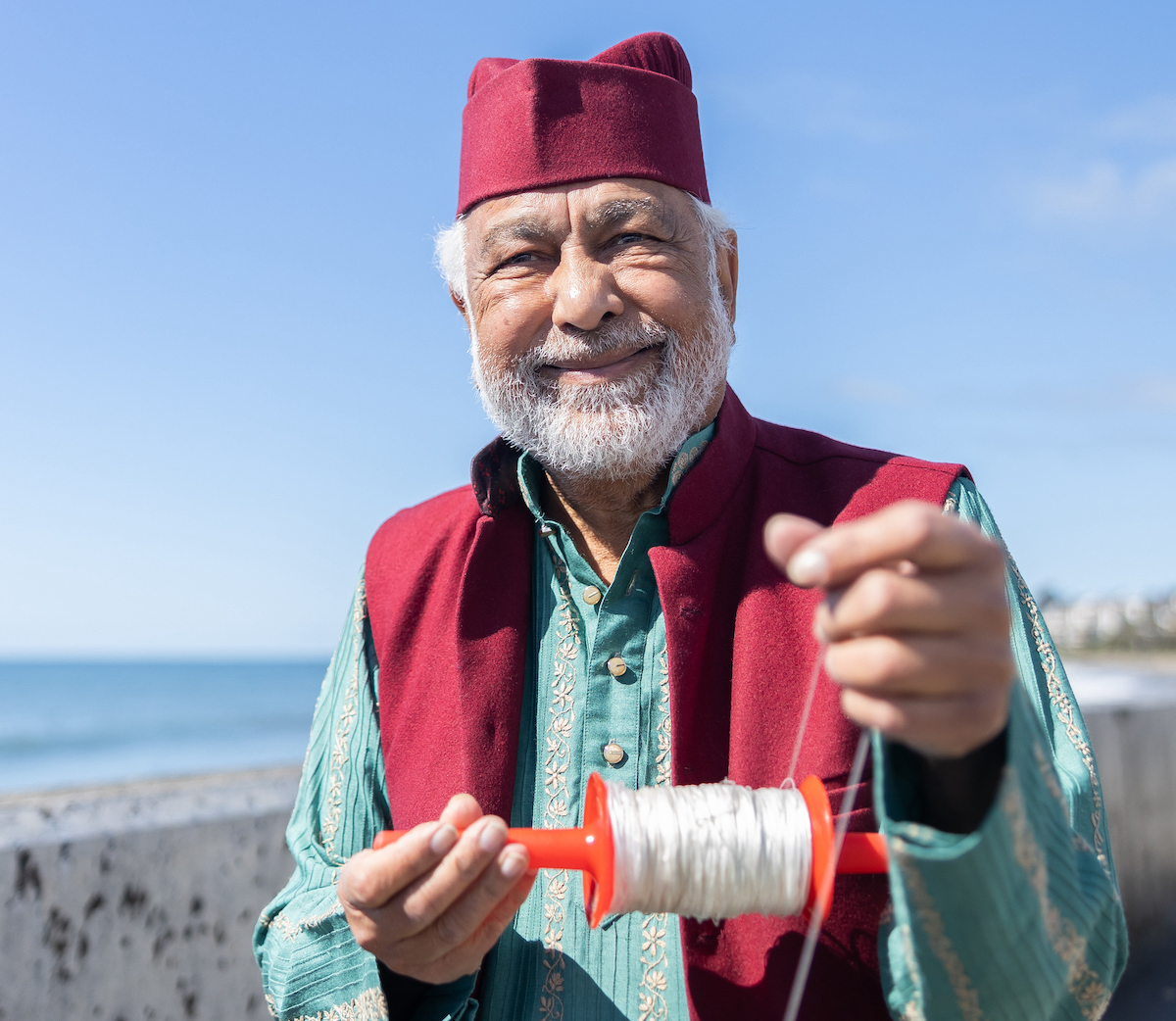
Never run with a kite. Instead, for a smooth takeoff, have someone stand several yards downwind, hold your kite above their head, and release. Then slowly step back, letting out more line as you go.
And for God’s sake, if it doesn’t already have one, don’t ever add a tail. It’ll just weigh the kite down. Think Charlie Brown.
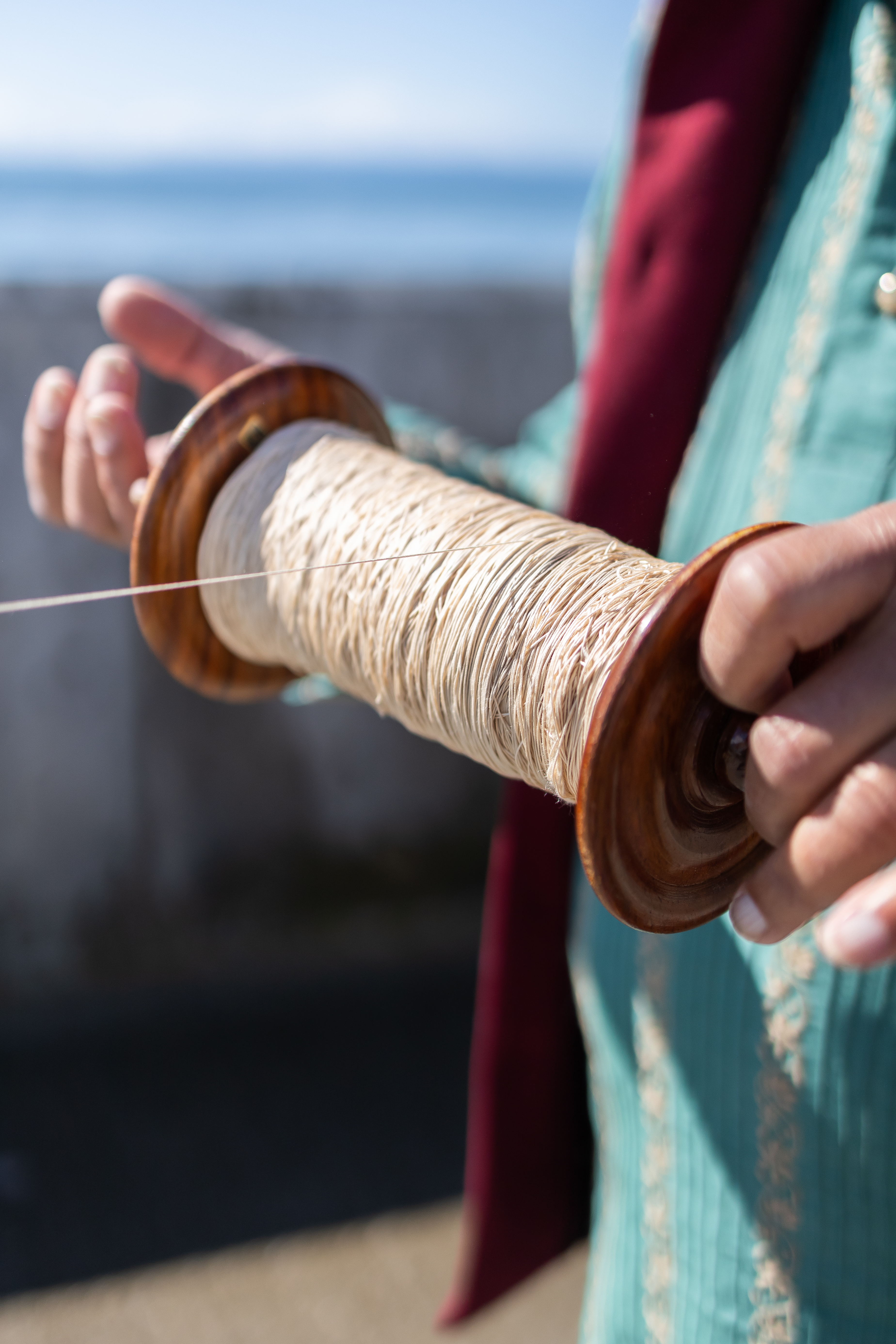
Those are the two pieces of advice you’ll get from Santa Barbara’s resident kite master, Rakesh Bahadur, when you pick his brain about the best way to fly. He admits it’s hard to put into words the thing he’s been doing since he was little.
Bahadur instead demonstrated his technique on a recent morning at the end of the Santa Barbara Harbor breakwater, first with a zippy teal fighter, then with a big white number stitched with a rainbow unicorn. Every passing person looked up and smiled. Some stopped to chat. “I’ve met so many people flying kites,” Bahadur said, including his wife.
This Sunday, April 16, from 11 a.m. to 4 p.m., Bahadur and longtime event organizer David Hefferman will host the 37th year of the Santa Barbara Kite Festival on the west campus lawn of Santa Barbara City College. It’s free, there’s parking nearby, and there will be food and plenty of kites for purchase.
“It’s always amazing to us how many colors are added to the sky by entire families of kite flyers,” said Hefferman. “Everyone is welcome.” By the end of the day, Hefferman will crown, among others, the most beautiful, most unique, and most un-flyable kites. “A rock on a string doesn’t count,” he said.
But the main event is the tail chase, where groups of kids run and grab for a kite flown by the master himself, who steers with such precision that he could knock your hat off your head from 100 yards away. Bahadur’s four grandchildren will also join the fun.
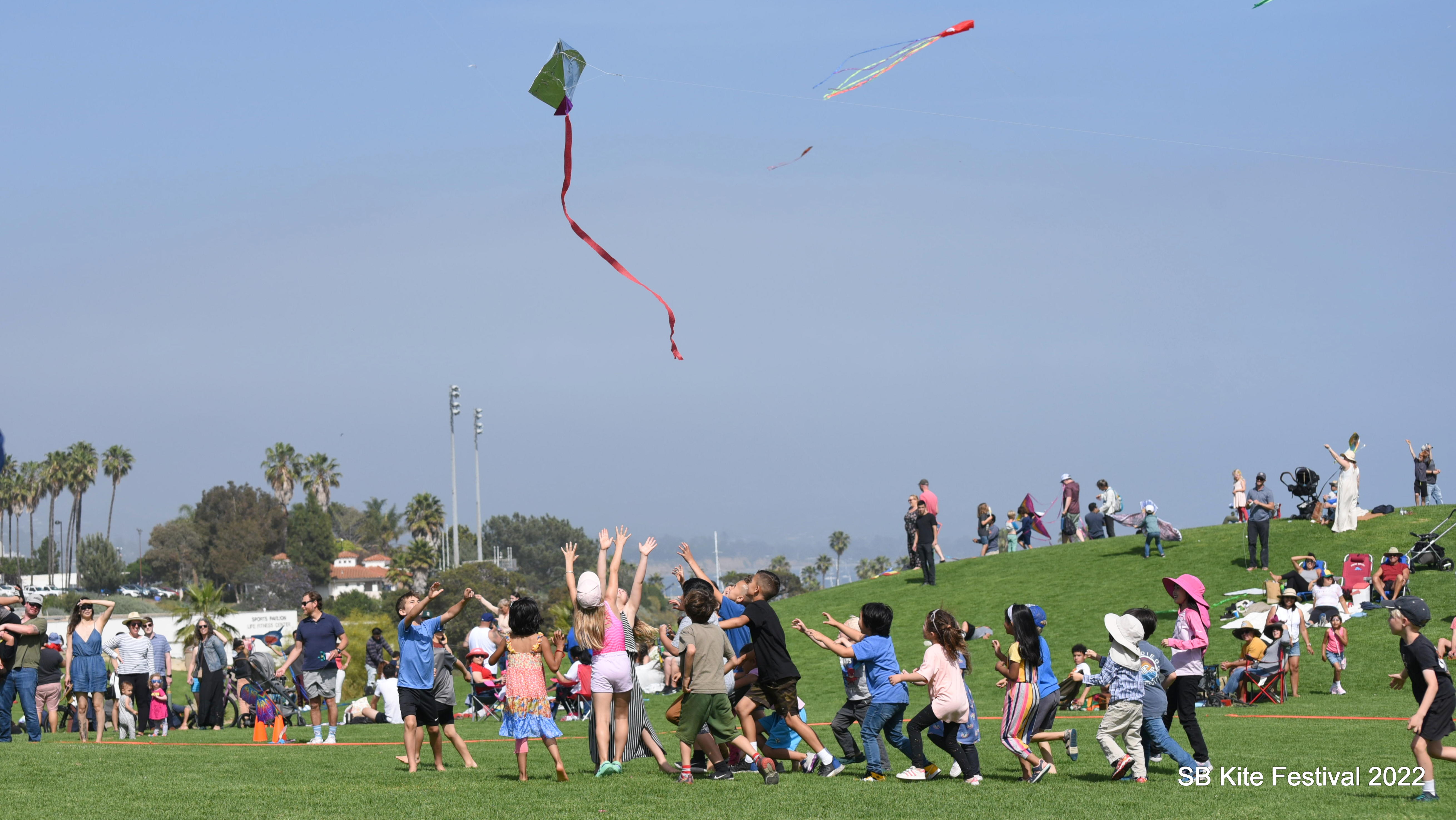
At 75 years old, Bahadur doesn’t know how many more festivals he has in him. “But I’ll keep doing it until the day I die,” he promised, because kites are all he’s ever known, from his days in India where he sparred with other young flyers to the chain of U.S. kite stores he ran with his brother to career highlights like putting on a Super Bowl halftime show.
“People have always wanted to fly,” Bahadur said, “and when you’re flying a kite, you’re up there with it. It’s an extension of yourself.”
The Bahadurs’ Star Rises
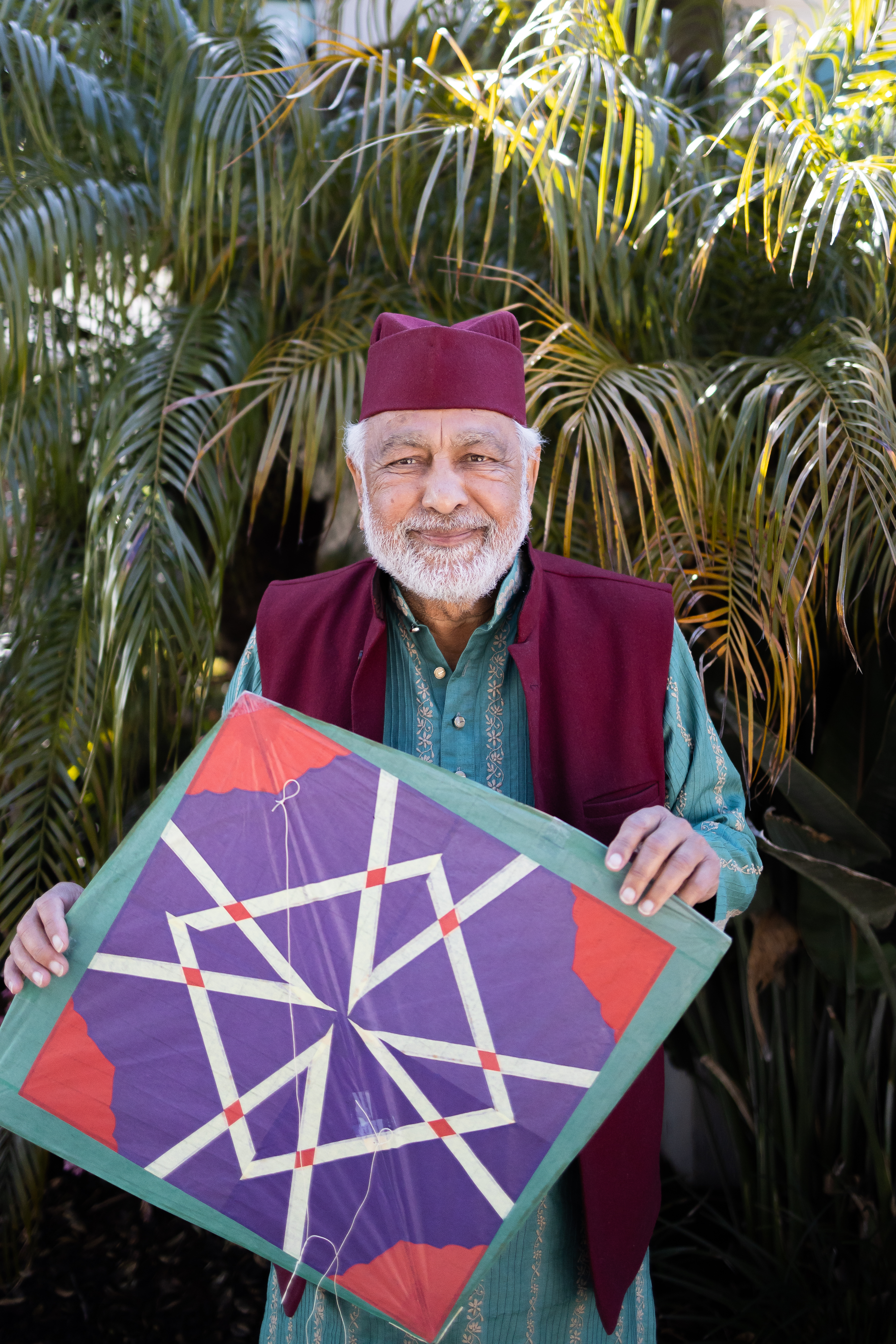
Bahadur grew up in Rampur, India, which is known as “The City of Kites.” Most of the population there earns a living making or selling them. His grandfather was prime minister to the king of Rampur, back when it was an independent state, so the family was well-off, living in a three-story home with a wide rooftop.
Children have the run of Indian roofs the way American kids do their backyards, Bahadur explained, and while he doesn’t remember hoisting his first kite — “Do you remember watching your first cartoon?” he asked — he does recall countless hours of flying and fighting up there.
As central as kites are to Indian culture — they practically block out the sun during the country’s many yearly festivals — so is the practice of fighting them, Bahadur went on. It’s like fencing in the air. Competitors coat their string with a paste of a glass powder, starch, and glue and try to cut their opponent’s line, encircle their kite, and bring it down as a trophy. Their hands move at lightning speed as they yank and pull the line, or suddenly give it more slack. A partner standing behind them keeps their spool taught and tangle-free. Matches can last for hours.
The small, diamond-shaped kites that fighters use, typically made of tissue paper stretched over bamboo dowels, are difficult to control but incredibly maneuverable. The best of the best compete at a national level, and the glory and prizes they can earn are substantial. When they’re not busy trying to take each other down, boys use their kites to deliver secret messages to girls, a theme often depicted in Indian art.
‘When you’re flying a kite, you’re up there with it. It’s an extension of yourself.’
Along with his eight brothers and sisters, Bahadur was schooled at home. But his teacher quickly discovered Bahadur would focus more on the kites over his head than on the book in his lap. So the teacher started coming in the evening after the sun went down. Bahadur went on to earn a master’s degree in history and in 1973, at the age of 24, he immigrated to America.
A few years before that, Bahadur’s uncle had opened a kite store in Manhattan, one of the very first in the United States. It was an instant and massive success — so much so that Bahadur’s uncle, after he got a $100 ticket, convinced New York authorities to drop an old law that banned kite-flying in Central Park. They also let him set up a Sunday stand. Bahadur’s brother, Dinesh, joined their uncle and soon after opened a second store, this one on the opposite coast in San Francisco’s Ghirardelli Square.
Bahadur met Dinesh in San Francisco and helped grow the family business, importing kites from all over the world and selling them to a fascinated American public. People had never seen such things — hand-painted owls from Thailand, Indian dragons 20 feet long, circular models from Guatemala, and Japanese miniatures so small they flew from a thread. New “space-age Mylar” brought down price points. Headlines and TV spots steered customers their way.
But the most effective form of advertising, Bahadur said, was walking down the block and flying one of their products among the mimes and street artists of Golden Gate Park. A crowd would inevitably gather. “It was a wonderful time,” he said.
‘On the Back of a Rolling Wind’
The brothers’ success and reputation soared. They became America’s preeminent kite-flying ambassadors, organizing festivals, hosting demonstrations, and putting on shows all over the country. They navigated the first-ever “kite-powered” boat, pulled a VW beetle across a polo field, and flew indoors — pumping their kites like the wings of a bird — for a gathering of IBM executives.
Dinesh, who’d won India’s national kite-fighting championship at the age of 12, kept them in the spotlight by regularly setting records, one for height (nearly a mile up) and another for longest continuous flight (760 hours). It was said he had stared at the sky for so long he could see stars in the daytime.
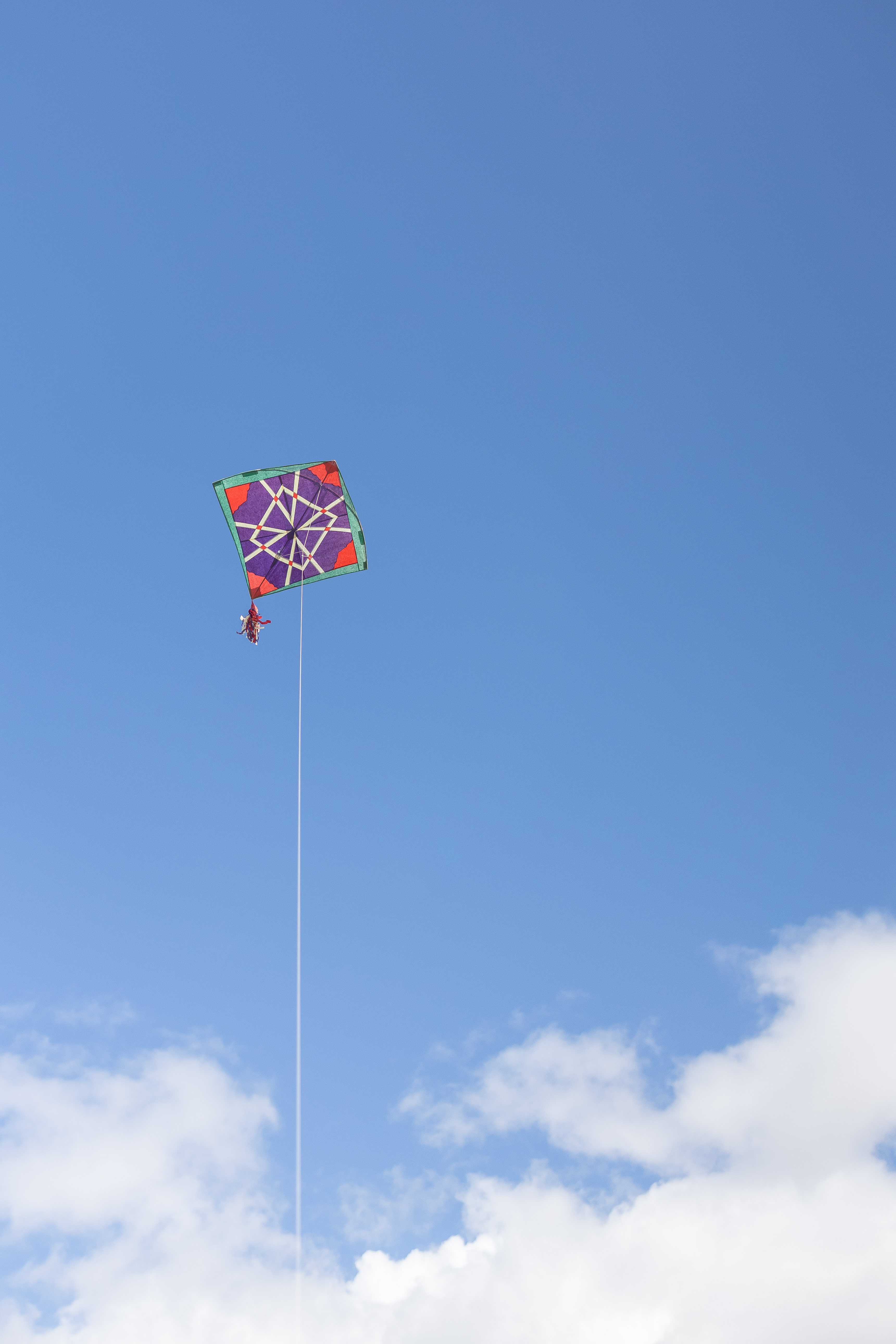
The brothers moved the whole family from India to a big house in Half Moon Bay, and they opened even more stores — Atlanta, Colorado Springs, Carmel, Hawai‘i, and in Piccadilly Square in Santa Barbara, where they eventually relocated.
The local shop is no longer open, and Bahadur is mostly retired from the wholesale distribution business he later ran, but he still promotes what he loves. Just last week, he tabled at 1st Thursday, showing children how to paint kites as one fluttered overhead. For adults, he emphasizes the meditative aspect of flying and the opportunity to connect with nature. To feel the wind and notice the clouds.
Back in the ’70s, the Bahadur brothers published a 20-page color booklet on the art and history of kiting. It describes how kites have been used in science and in war, and it talks about their ability to lift the soul:
Though King Gupta lived very long ago, he was very much like many modern people, for he could find no real happiness in anything. With his great wealth, he collected fabulous treasures. With great power, he attracted many glamorous people. And with his keen mind, he mastered all the arts. “But there must be something more,” he sighed in his loneliness.
Hearing of the sad plight of the king, a sage old doctor went to the palace one day with a fighter kite under his arm. He challenged the king to a pench (duel), and the king lost. From that day on, the king was seen constantly practicing kite maneuvers from the palace walls. No one knows if he ever beat the old doctor.
But something did happen to the lonely king. Through nothing more complicated than a kite, the king regained the pleasure of joyful play, and by watching his kite in the sky, he rekindled the flame of contemplation. Years later, after a rich and happy life, the king left his people this message written above the palace gate:
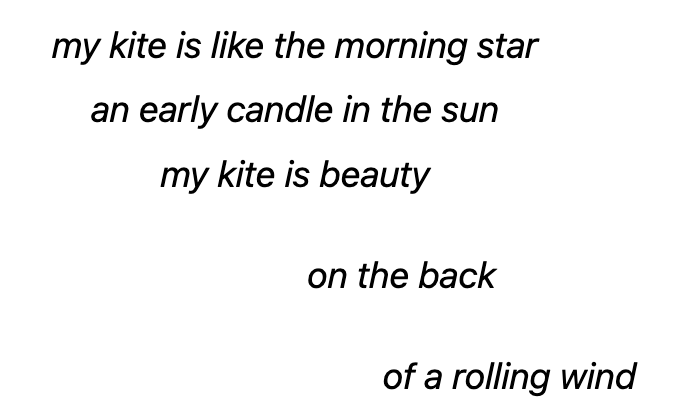
Santa Barbara Kite Festival will be held Sunday, April 16, 11 a.m.-4 p.m., at SBCC West Campus. See sbkitefest.net.





You must be logged in to post a comment.